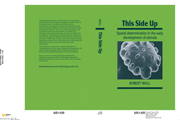Book contents
- Frontmatter
- Contents
- Preface
- Acknowledgements
- 1 Oogenesis
- 2 From oocyte to zygote
- 3 Does cleavage cut up a preformed spatial pattern?: the case of spiralian embryos
- 4 The limits of mosaicism in non-spiralian cleavage
- 5 Cellular interactions in the morula and blastula: the case of sea urchin embryos
- 6 Interactions at morula and blastula in other embryos
- 7 Interactions between moving cells: the case of amphibian gastrula
- 8 Spatial determination in the gastrulae of other groups
- 9 Determination in embryos showing partial cleavage
- 10 Patterns and mechanisms in early spatial determination
- References
- Index
7 - Interactions between moving cells: the case of amphibian gastrula
Published online by Cambridge University Press: 06 October 2009
- Frontmatter
- Contents
- Preface
- Acknowledgements
- 1 Oogenesis
- 2 From oocyte to zygote
- 3 Does cleavage cut up a preformed spatial pattern?: the case of spiralian embryos
- 4 The limits of mosaicism in non-spiralian cleavage
- 5 Cellular interactions in the morula and blastula: the case of sea urchin embryos
- 6 Interactions at morula and blastula in other embryos
- 7 Interactions between moving cells: the case of amphibian gastrula
- 8 Spatial determination in the gastrulae of other groups
- 9 Determination in embryos showing partial cleavage
- 10 Patterns and mechanisms in early spatial determination
- References
- Index
Summary
The last two chapters have demonstrated that the extent of spatial determination is often greatly increased at morula and blastula stages by interactions involving large areas of the embryo. Even in late blastulae, however, this determination is commonly incomplete, with little more than the three germ layers being defined in amphibians.
The next stage of development, gastrulation, is one of morphogenetic movements which broadly speaking bring the germ layers to their correct positions in a multilayered embryo. Inner layers may be directly separated by delamination, but more commonly some cells move in actively by an individual ingression or as a coordinated invagination or involution of whole sheets of cells (see Trinkaus, 1984, p. 11, for definitions of these terms). Wherever cells move and make new contacts, new opportunities for interactions will arise. This chapter will concern the amphibian gastrula where such interactions have received particular study, and have been shown to greatly increase the complexity of spatial determination.
Morphogenetic movements
The movements taking place in amphibian gastrulae are an intensification of those already described in blastulae (p. 189). There is a spreading movement of cells away from the animal pole called epiboly, and an inward movement of cells in the vegetal area. During gastrulation, both of these activities occur much the fastest on the dorsal side. Figure 7.1 (a)– (e) shows some stages of gastrulation in sagittal view in the simpler case of the urodeles.
- Type
- Chapter
- Information
- This Side UpSpatial Determination in the Early Development of Animals, pp. 211 - 252Publisher: Cambridge University PressPrint publication year: 1990



